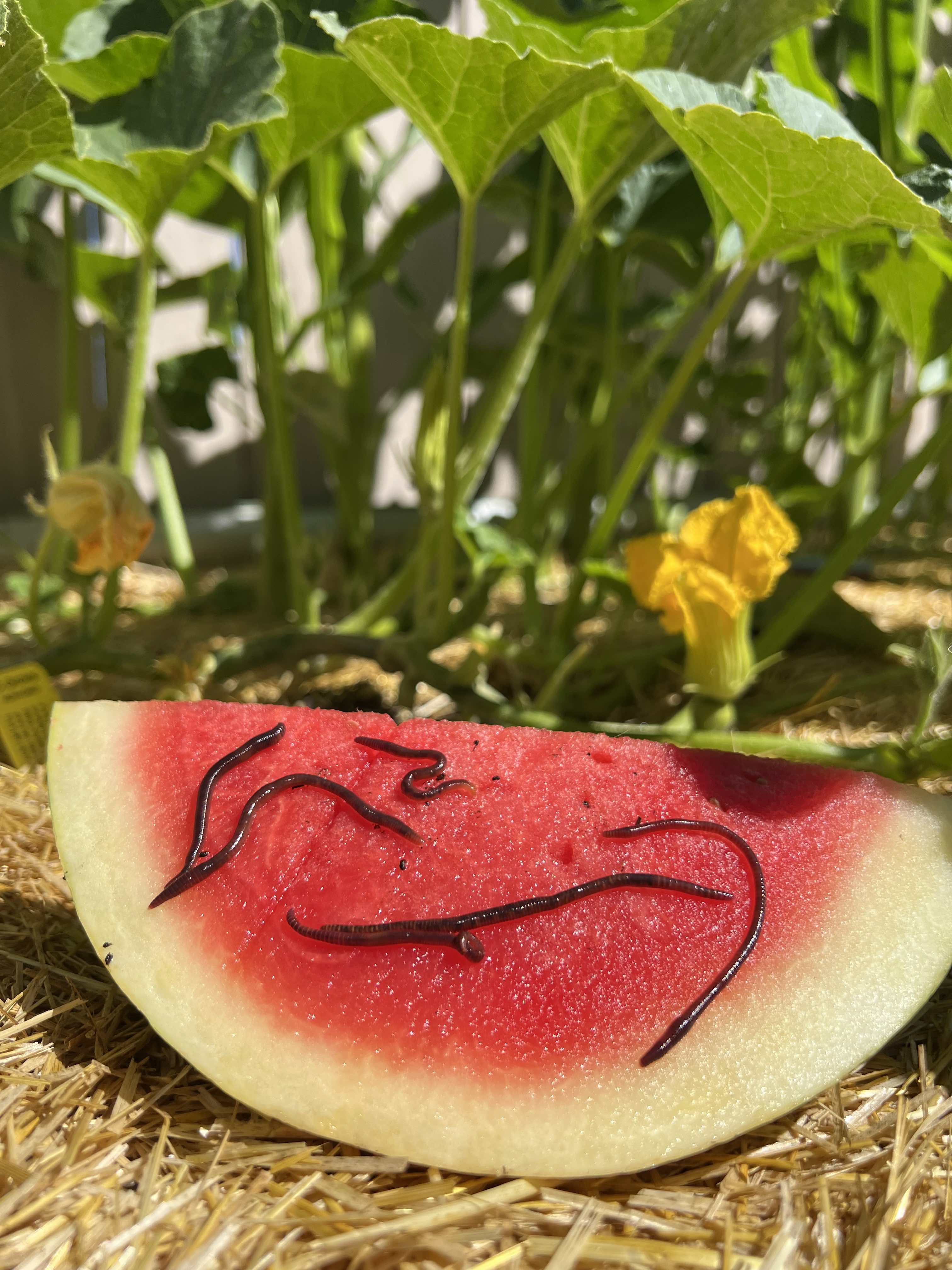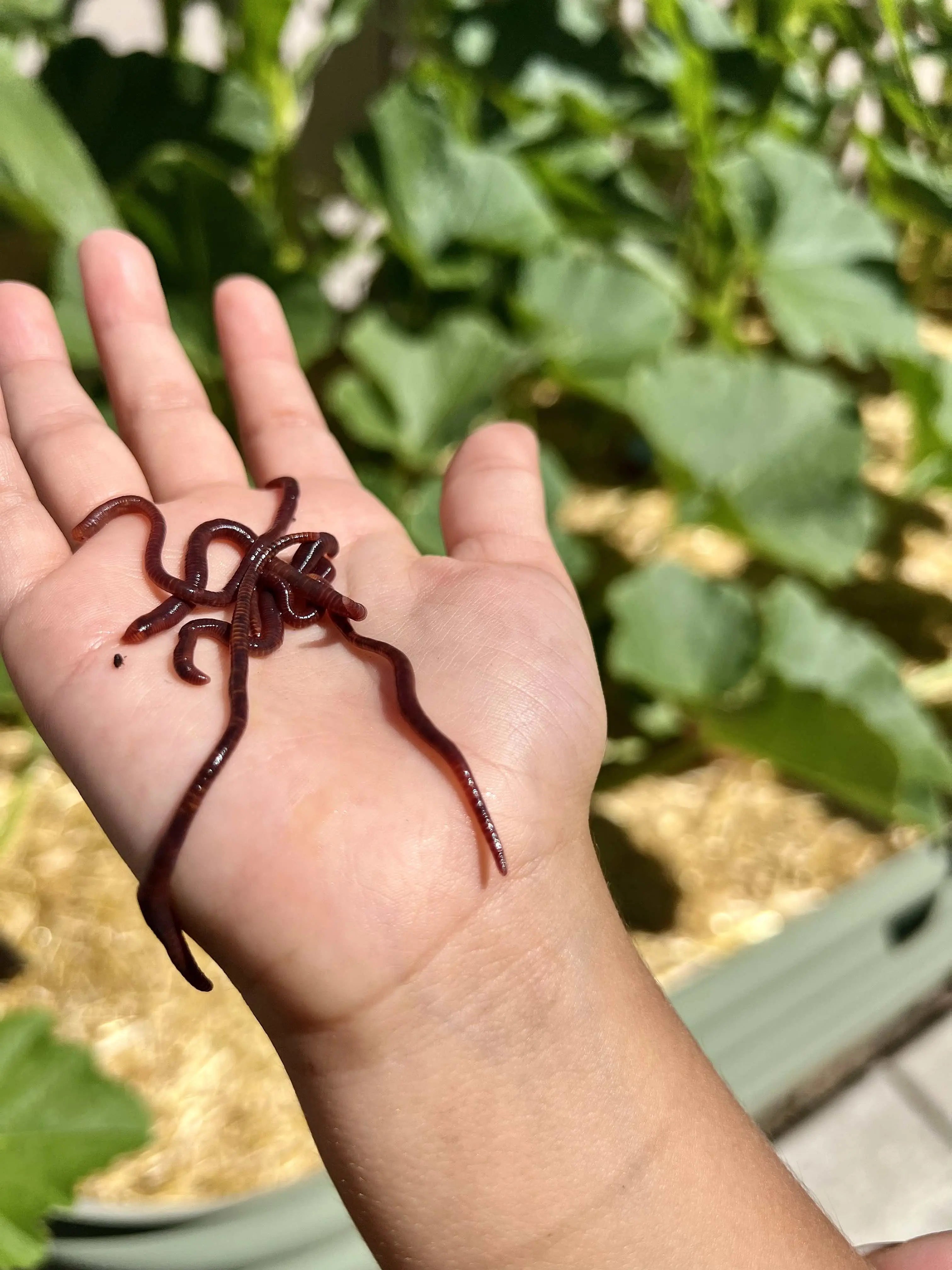Red Wiggler Worms - Perfect for Vermicomposting and Dirt Enrichment
Red Wiggler Worms - Perfect for Vermicomposting and Dirt Enrichment
Blog Article
Maximizing the Perks of Red Wiggler Worms: A Comprehensive Handbook for Home Gardeners and Urban Farmers
In the world of sustainable horticulture methods, red wiggler worms stand as unhonored heroes, silently transforming natural waste into nutrient-rich spreadings that can work wonders for soil health and wellness. As home garden enthusiasts and urban farmers significantly look for eco-friendly and cost-efficient means to boost their yards, the potential advantages of taking advantage of the power of red wigglers can not be overstated. From decreasing kitchen area waste to growing healthier plants, the usage of these simple creatures uses a plethora of advantages. By discovering the complexities of exactly how to effectively care for and maximize the benefits of red wiggler worms, individuals can unlock a wide range of chances for boosting the sustainability and productivity of their horticulture undertakings.
Recognizing Red Wiggler Worms
Red Wiggler worms, renowned for their effective composting capabilities, are a varieties of earthworms extensively utilized in vermiculture practices. These worms, scientifically called Eisenia fetida, thrive in decaying natural material, making them excellent prospects for composting (Red Wiggler Worms). Red Wigglers are voracious eaters, efficient in eating their own weight in organic waste daily. Their digestive process breaks down raw material into nutrient-rich castings, which are a useful resource for enriching soil and promoting plant development.
One trick attribute of Red Wiggler worms is their reproductive price. These hermaphroditic creatures have both female and male reproductive body organs, enabling them to replicate rapidly under desirable conditions. A fully grown Red Wiggler can generate numerous children in a brief duration, making certain a constant population within a composting system.

Setting Up a Worm Bin
When establishing a worm container for vermiculture objectives, appropriate preparation and focus to information are vital for developing a helpful environment for Red Wiggler worms. Begin by picking an appropriate container for your worm container.

Location the worm container in an amazing, dark location away from direct sunlight and extreme temperature levels. Consistently keep track of the dampness levels, including water if the bed linen feels dry or half-cracked. Feed the worms a balanced diet regimen of fruit and vegetable scraps, staying clear of citrus fruits, onions, and spicy foods. By following these steps, you can establish a prospering worm container that will successfully process organic waste into nutrient-rich vermicompost for your yard.
Feeding and Keeping Worms
Making sure a nutritious and balanced diet is critical for the health and wellness and productivity of Red Wiggler worms in a vermiculture system. It is important to stay clear of feeding them citrus fruits, onions, garlic, dairy products, meat, and oily foods as these can be damaging to the worms or cause unpleasant smells in the container.
Appropriate moisture levels are also important for the well-being of Red Wiggler worms. The bed linens needs to seem like a wet sponge, supplying enough dampness for the worms to breathe via their skin. Consistently check the wetness degrees and change by adding water or completely dry bed linen material as needed. Additionally, maintaining proper temperature problems in between 55-77 ° F(13-25 ° C )will guarantee optimum worm activity and reproduction. By vigilantly monitoring their diet regimen, dampness, and environmental problems, home gardeners and urban farmers can maintain a healthy and efficient Red Wiggler worm population for composting objectives.
Harvesting Worm Castings
To effectively extract nutrient-rich worm spreadings from the vermicompost, a systematic harvesting procedure is essential for maximizing the composting advantages. Red Wiggler Worms. The initial step in collecting worm spreadings is to motivate the worms to move away of the bin. This can be accomplished by placing fresh food scraps on one side and home leaving the opposite side uninterrupted for a couple of days. When the majority of worms have moved to the side with fresh food, the spreadings can be collected from the opposite side.
After the spreadings have actually been harvested, it is necessary to divide any remaining worms from the castings to stay clear of damaging them during storage or application. One efficient approach is to develop cone-shaped heaps of spreadings under brilliant light. Worms will instinctively relocate far from the light, enabling simple separation and elimination.
Lastly, the harvested worm castings ought to be saved in an awesome, dark, and dry place to maintain their high quality and efficiency as a nutrient-rich dirt change. By adhering to these steps, home gardeners and metropolitan farmers can make best use of the advantages of red wiggler worms in their vermicomposting systems.
Utilizing Worm Castings in Horticulture
The consolidation of great post to read nutrient-rich worm spreadings into garden dirt can considerably enhance plant growth and general dirt wellness. Worm castings, likewise called vermicast, are a natural fertilizer produced by red wiggler worms as they break down natural issue. These spreadings are rich in essential nutrients like nitrogen, phosphorus, potassium, and helpful germs that advertise plant growth and improve soil framework.
When using worm spreadings in gardening, it is vital to mix them thoroughly into the dirt or use them as a leading dressing around plants. The slow-release nature of worm spreadings makes sure a steady supply of nutrients to plants over time, reducing the danger of nutrient leaching and advertising long-term dirt fertility. In addition, worm spreadings aid improve dirt oygenation, water retention, and microbial task, creating a healthy atmosphere for plant roots to thrive.

Conclusion
To conclude, the usage of red wiggler worms in home browse around here horticulture and urban farming can dramatically profit dirt health and plant growth. By comprehending how to set up and keep a worm bin, feed the worms appropriately, and collect their nutrient-rich spreadings, garden enthusiasts can make the most of the benefits of these earthworms. Incorporating worm castings into horticulture practices can enhance dirt fertility and total plant productivity. In general, red wiggler worms use a sustainable and effective option for boosting garden and farm yields.
In the realm of lasting gardening methods, red wiggler worms stand as unrecognized heroes, silently changing natural waste right into nutrient-rich spreadings that can work wonders for soil health.When developing a worm container for vermiculture functions, appropriate preparation and interest to information are crucial for creating a helpful environment for Red Wiggler worms. The first step in harvesting worm spreadings is to encourage the worms to move to one side of the container. Worm spreadings, also recognized as vermicast, are an all-natural plant food generated by red wiggler worms as they break down natural issue. By understanding just how to set up and maintain a worm bin, feed the worms effectively, and gather their nutrient-rich castings, gardeners can optimize the advantages of these earthworms.
Report this page